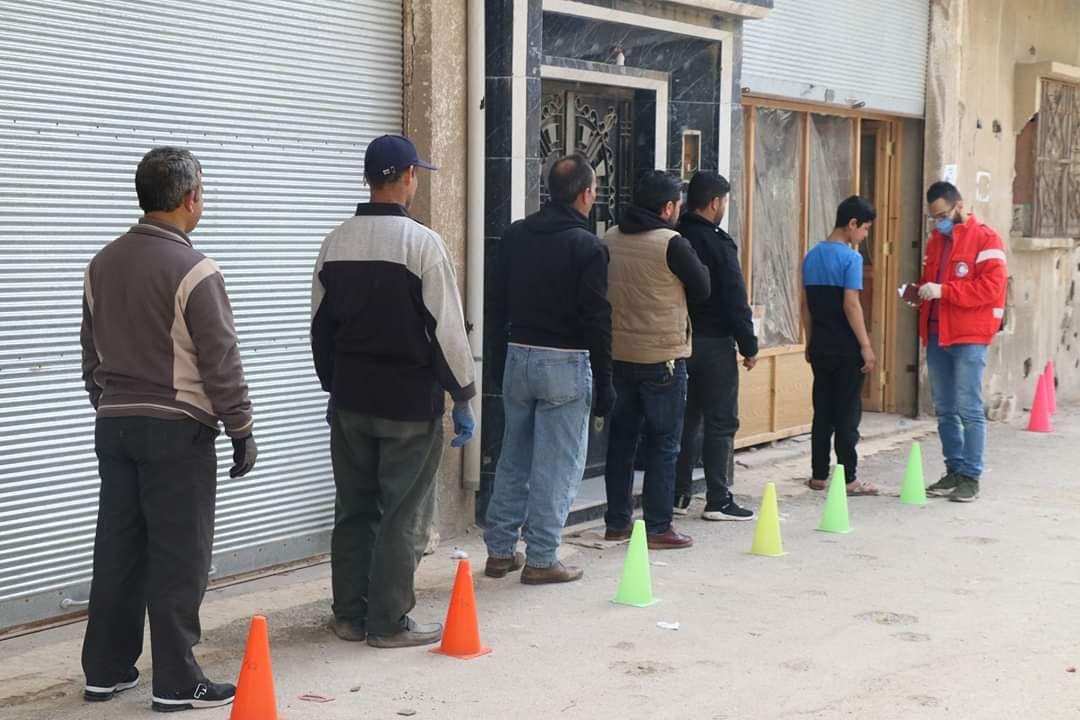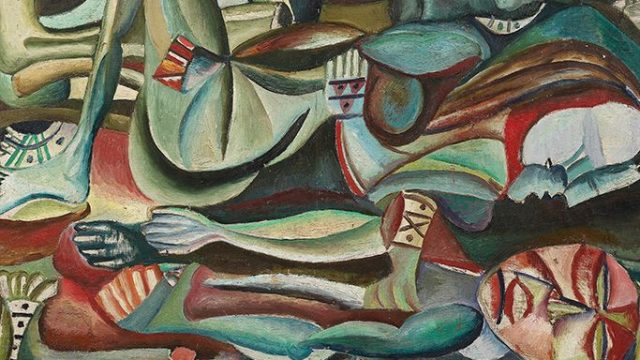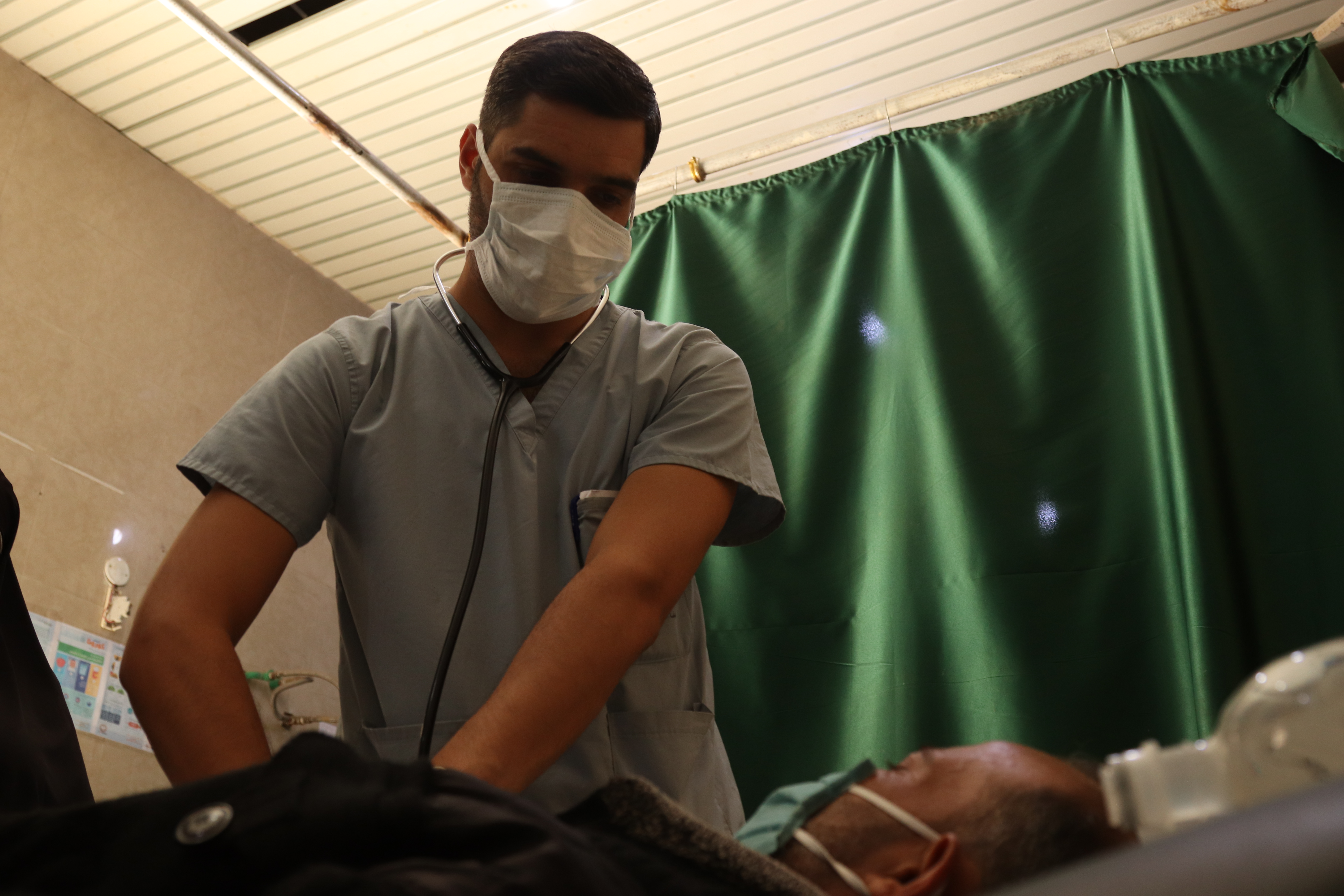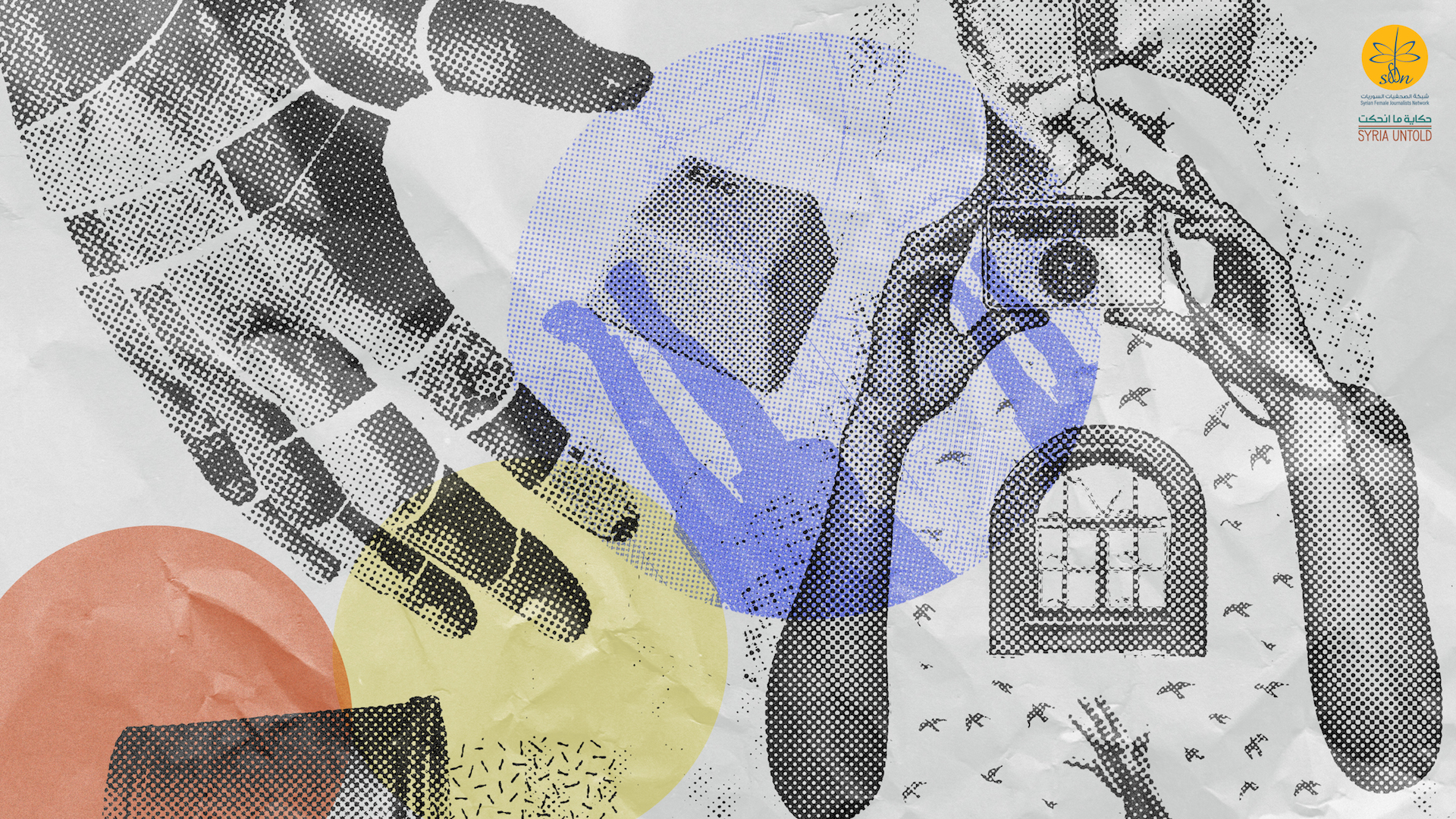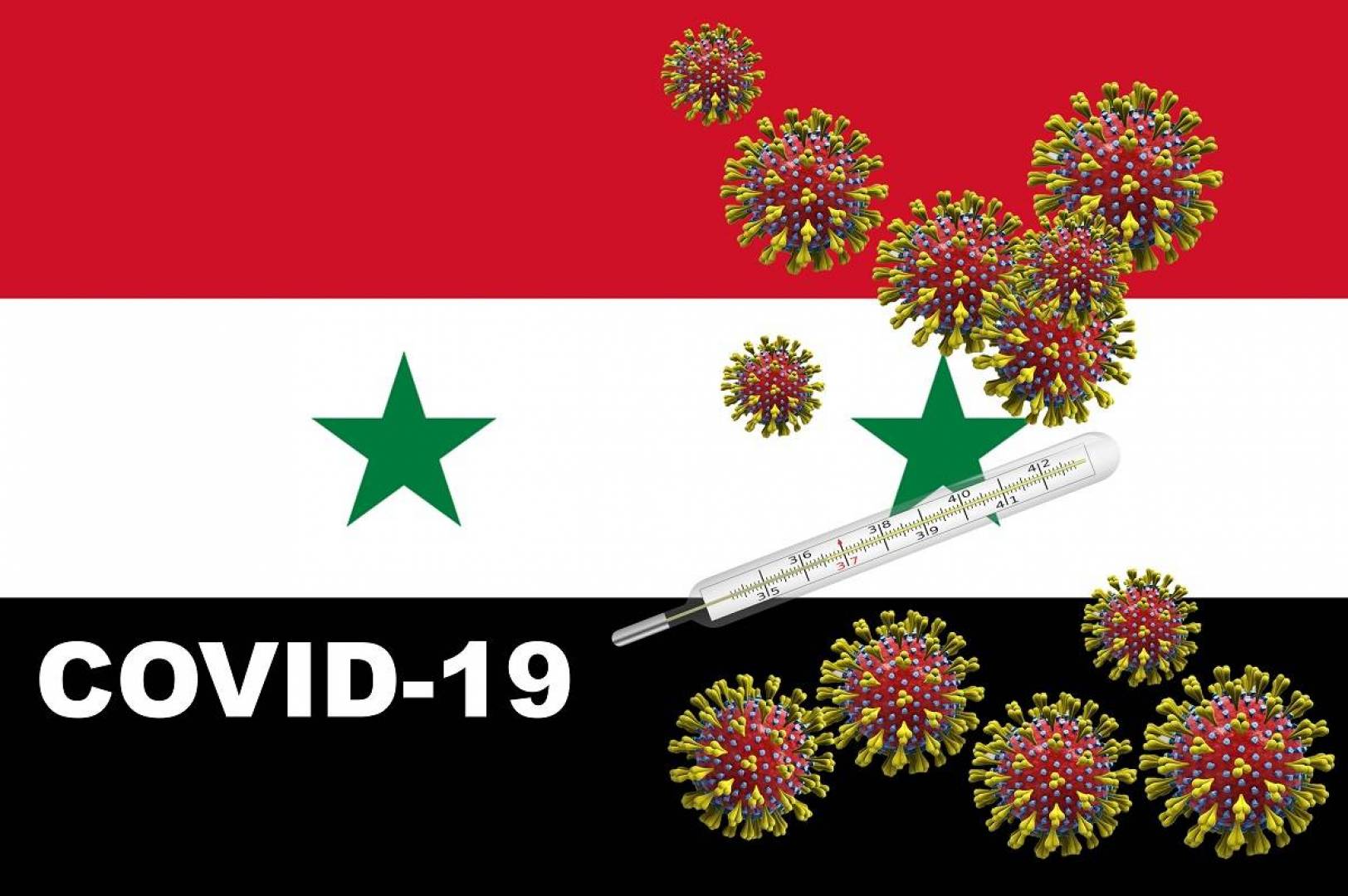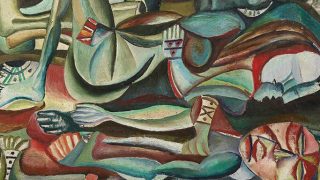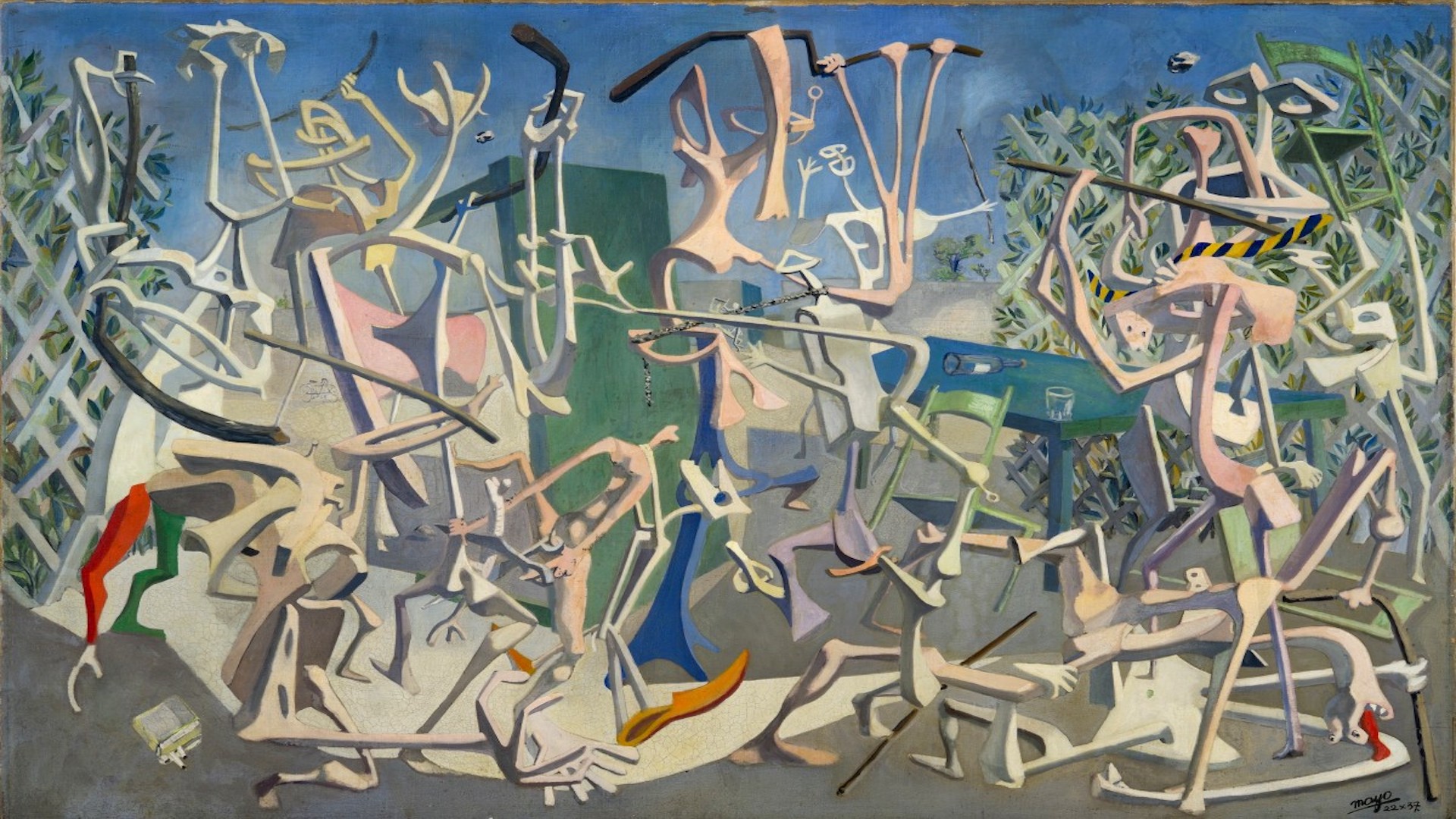They began their careers patching up wounded protestors at the start of the revolution. Then, as the war stretched out over the next nine years, they treated injuries sustained from torture, or from airstrikes carried out by the government and Russia.
Now as coronavirus cases appear to spike in their corner of northwestern Syria, those same young doctors are racing to protect patients from an enemy that is, for the first time, invisible.
Syria’s northwest is the last major area of the country still in rebel hands after years of military victories by the government. Much of the area, which stretches across Idlib governorate and parts of neighboring rural Aleppo, is held by hardine Islamist group Hay’at Tahrir al-Sham.
The UN-assisted Early Warning Alert and Response Network (EWARN) recorded a total of 1,072 cases of the novel COVID-19 virus since July, after confirming 73 new cases on Sunday. While rebel-held parts of Aleppo governorate have recorded more coronavirus cases in total, recent data indicate a worrisome spike of the pandemic within Idlib.
Idlib saw less than ten daily cases per day in early September, according to EWARN. But then around mid-September, there was a noticeable jump to 25 cases in one day, signalling an uptick in local community spread.
It is yet another worrying sign for residents who have already faced bombing and mass displacement in the past year.
Much of last year, as well as the beginning of 2020, saw Syrian and allied Russian forces rain airstrikes and artillery fire down over Idlib in a deadly bid to recapture parts of the governorate’s south near two key highways. Around a million people were forced from their homes in the onslaught, while pro-government forces deliberately targeted dozens of medical facilities. More than 1,750 people were killed.
A ceasefire in March between Turkey and Russia halted much of the bombing.
A new threat
Still, the destruction has left deep psychological wounds, says Dr. Wassel al-Jark, a surgeon. His own workplace, a hospital near the city of Maaret al-Numan in rural Idlib, was rendered a pile of rubble when pro-government forces hit it with an airstrike last year. He later fled further north for safety, near the border with Turkey, where more than a million displaced Syrians now live crammed into poorly served, oftentimes informally built camps. From there, he moved to Antakya.
“These areas have seen so much death, and those who have survived have lost limbs, sustained serious injuries or have become traumatized,” Jark says.
Coronavirus, meanwhile, is a different kind of threat.
If the situation goes on like this, it will be catastrophic in a month.
-Dr. Mohammad Salem, neurosurgeon
“People know coronavirus will not kill everyone at once, and that coronavirus casualties [around the globe] don’t exceed 3 percent” of infections, he adds, citing a count this week by the UN’s humanitarian access agency, OCHA, and the World Health Organization.
Jark is accustomed to more visible ailments. Now 35 years old, he started out as a doctor in the early days of the revolution, helping injured protestors in his spare time between shifts at Aleppo University Hospital.
Then in 2012, he found out through a list leaked to the public that he was wanted by the government’s security apparatus. He left Aleppo, finding work in hospitals in opposition-held parts of rural Hama and Idlib governorates, where fierce battles and bombings soon left residents in need of medical treatment.
Months before health officials recorded the first coronavirus case in Idlib in July, Jark moved with his family to Turkey. Government forces had retaken control of his home village in the countryside south of Idlib city. Now he works as a coordinator with Syria Relief and Development (SRD), a Turkey-based aid organization. From there, he supervises three hospitals built by the Syrian Expatriate Medical Association (SEMA) in Idlib, Kafar Takharim and Jisr al-Shughour to treat coronavirus patients.
“The [experiences] of the Syrian people in the northwest can’t be compared to the coronavirus crisis, because the former is actually much worse. This is why you see people don’t fear the coronavirus at all, even if it has caused casualties. It’s a given that coronavirus will not kill a million people [in Syria] or displace 5-6 million,” Jark says of attitudes towards the pandemic in Idlib.
An oncoming coronavirus peak?
COVID-19 on the Syrian coast
28 March 2020
And yet, cases have spread rapidly in Syria’s northwest in recent weeks. According to Jark, there are sufficient hospital beds for all coronavirus patients needing inpatient care, but only for the time being.
“The virus is currently in the local transmission phase and the rise in numbers we’re seeing is expected. A localized study predicts that the first wave of the virus [in Syria’s northwest] will reach its peak in October,” the surgeon warned. “Our health sector won’t be able to absorb the impact of the coronavirus. Right now there are fully-equipped countries that are unable to confront the virus. Syria is destroyed, not just the north, but also regime-held areas.”
The government, reported to have deliberately withheld information about the spread of the virus, announced Syria’s first coronavirus case on March 22. The Ministry of Health announced a total of 4,200 total cases across the country on Wednesday, though the real numbers are likely far higher, according to an investigation by the newsletter Syria In Context. Still, likely due to restrictions on movement between different areas of Syria, the virus took some time to reach the northwest.
Soon after it arrived in July, infections shot up. Dr. Mohammad Salem, a neurosurgeon from opposition-held rural Aleppo, says the rise in coronavirus cases was expected due to overcrowded living conditions in displacement camps and other parts of Syria’s northwest.
Health experts had sounded the alarm for months ahead of the northwest’s first confirmed infection.
Their warnings proved insufficient. “We didn’t have any lockdowns and we didn’t close down shops, prohibit events or impose social distancing. People aren’t wearing masks and mosques are still operating. All these factors increased the spread,” Salem says.
“If the situation goes on like this, it will be catastrophic in a month.”
Salem, a graduate from Aleppo University, worked in field hospitals during much of the war before taking on an administrative job earlier this year to monitor epidemics and contagious diseases.
Currently the Director of the Gaziantep-based vaccine program of Syria’s non-governmental Assistance Coordination Unit (ACU), Salem works on monitoring coronavirus cases in both Aleppo and Idlib for daily situation reports.
Salem said he has received patients with minor to moderate symptoms on the job, while the severe cases were handled in separate isolation wards.
While doctors say they are frustrated with people attending weddings and crowded markets without distancing or wearing masks, Salem—who himself recovered from the virus last month—stopped short of directing blame.
“The majority of people do not seem to care about the coronavirus because they have greater concerns—deteriorating living conditions, war, airstrikes and displacement,” Salem says.
He worries that there simply aren’t enough medical workers in Idlib to contain and treat the pandemic. “This also doesn’t take into account that some of the needed medical specializations are missing,” he says.
“We are sitting on a time bomb with catastrophic retributions.”
*The author of this report requested a pseudonym for the safety of family members in Syria.


